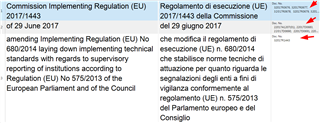Hello everyone,
I'm writing here because of a problem with the import of DGT tmx (available here https://ec.europa.eu/jrc/en/language-technologies/dgt-translation-memory) into a sdltm. I can import segments but not fields related to them.
I would need the final sdltm to display the fields I can see in the TMX file which show the type of text the translation unit was taken from.
I have tried to perform the import using both "the imported data will be primarily used in mixed scenarios" and "the imported data will be primarily used with presegmented legacy SDL Trados ITD or TTX files" but the result was the same: no TMX field was imported into the sdltm.
Have you got any suggestion/idea on how to import translation units fields from tmx files into sdltm?
Davide

 Translate
Translate



